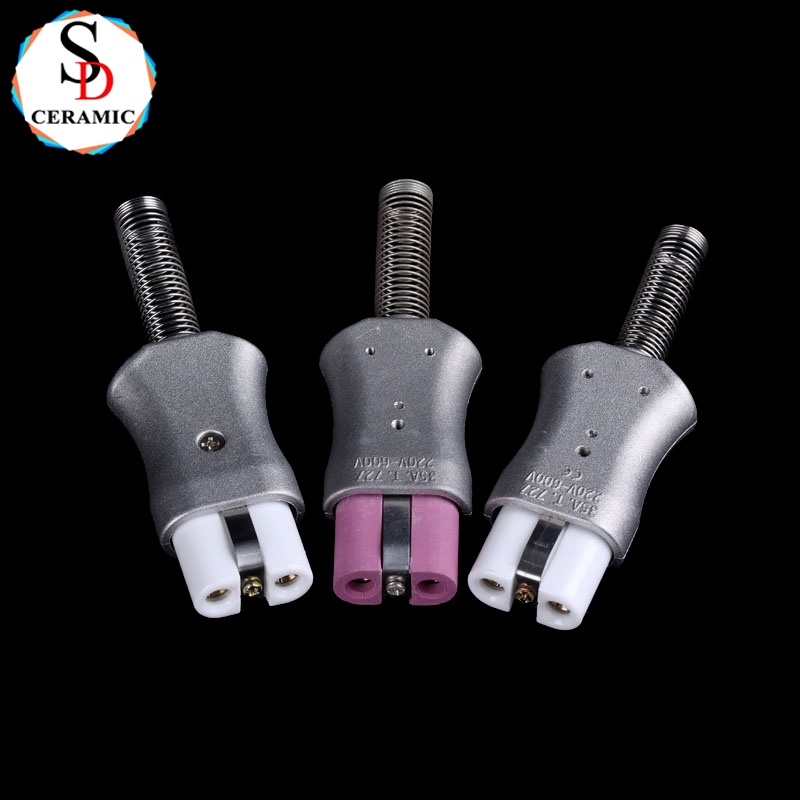What is structural ceramic material?
Structural ceramics are known worldwide as engineering ceramics, high-performance ceramics, or industrial ceramics, mainly composed of inorganic non-metallic materials such as oxides, nitrides, carbides, or borides. Structural ceramic materials have characteristics such as high hardness, high strength, wear resistance, high temperature resistance, and corrosion resistance, but they also have the characteristics of high brittleness and weak impact resistance. They can maintain stable performance in extreme environments, such as long-term use under high temperatures (usually up to 1400 ° C to 2000 ° C), strong acids and alkalis, or high wear conditions.
Why use structural ceramic materials?
There are various types of structural ceramics, and their different chemical compositions and microstructures endow them with different mechanical and physical properties. Due to its excellent high temperature resistance, high hardness, low density, corrosion resistance, and excellent wear resistance, structural ceramics are widely used in fields such as mechanical manufacturing, aerospace, energy, chemical engineering, metallurgy, electronics, and national defense.
Due to the outstanding performance of structural ceramics under extreme conditions, they are gradually replacing traditional metals, alloys, and polymer materials. By adjusting the material formula and preparation process, its performance can be optimized to meet the needs of different application scenarios. Reasonable use of structural ceramics can significantly improve equipment lifespan, reduce maintenance costs, and enhance overall performance.
Basic characteristics of structural ceramics:
1. Extremely high hardness and wear resistance
The hardness of structural ceramics far exceeds that of most metal materials, for example, the hardness of alumina ceramics can reach Mohs 9, second only to diamond. This makes them excellent in wear-resistant components such as bearings, cutting tools, and seals, which can significantly extend their service life.
2. Excellent compressive strength
The compressive strength of structural ceramics is usually between 1000 MPa and 5000 MPa, which is much higher than that of ordinary steel (about 300-500 MPa) and titanium alloys (about 1000 MPa), making it an ideal choice for withstanding high load environments.
3. Low density, lightweight
The density of structural ceramics is generally between 3-6 g/cm ³, which is lighter than stainless steel (8 g/cm ³) and titanium alloy (4.5 g/cm ³), making them significantly advantageous in aerospace and high-speed moving parts.
4. Excellent high temperature resistance performance
Many structural ceramics, such as silicon carbide and silicon nitride, can remain stable at temperatures above 1600 ° C, while metal materials soften or even melt at this temperature. This makes structural ceramics the preferred material for gas turbines, rocket nozzles, and high-temperature furnace linings.
5. Chemical stability and corrosion resistance
Structural ceramics have strong resistance to corrosive media such as acids, alkalis, and salts, and will not undergo oxidation or corrosion like metals. Therefore, they are widely used in the chemical, petroleum, and medical fields.
|
|
Limitations of structural ceramics:
1. High brittleness and poor impact resistance
The atomic bonds of structural ceramics are mainly ionic or covalent bonds, lacking the plastic deformation ability of metallic materials, which makes them prone to brittle fracture when subjected to impact or stress concentration. Therefore, in the design, it is necessary to optimize the structure to avoid stress concentration, and its toughness can be improved through toughening techniques such as adding ZrO₂ or fiber reinforcement.
2. High processing difficulty
Due to its extremely high hardness, sintered structural ceramics can usually only be precision machined through diamond grinding or laser processing, resulting in higher manufacturing costs. However, some ceramics, such as zirconia ceramics, can achieve near net shape through precision sintering, reducing the need for subsequent processing.
3. Performance is greatly affected by backup processes
The performance of structural ceramics is highly dependent on the purity of raw materials, sintering process, and microstructure control. Even for ceramics with the same composition, different preparation processes may lead to significant differences in performance. Therefore, strict quality control and process optimization are crucial.
Conclusion
Although structural ceramics have certain limitations, their excellent high-temperature stability, wear resistance, and chemical inertness make them irreplaceable in many industrial fields. With the advancement of materials science and manufacturing technology, the application scope of structural ceramics will further expand, providing stronger support for the development of modern industry.

If you have any questions or need help, feel free to contact with our team.
Phone
+86 183 5248 9056
Location
Qianluo Village, Dingshu Town, Yixing City, Jiangsu Province, China
Welcome to subscribe to our email message!


Copyright © Yixing Shengda Refractory Ceramic Co., Ltd. All Rights Reserved | Sitemap | Powered By 